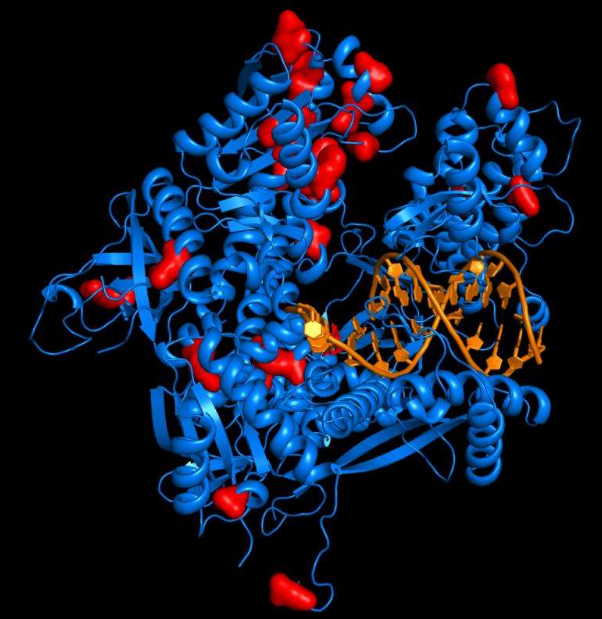RNA polymerase holoenzyme is sufficiently large to contact many deoxyribonucleotides within the promoter simultaneously. An estimate of the size of the region of the DNA where contact is made is obtained by selectively degrading adjacent DNA bases with DNase a procedure known as the DNase protection method. RNA polymerase holoenzyme is bound to DNA and then a DNA endonuclease is added to the mixture. The endonuclease degrades most of the DNA to mono-and dinucleotides but leaves untouched DNA segments in close contact with RNA polymerase; protected segments vary in size from 41 to 44 base pairs (bp). If RNA polymerase holoenzyme were to be added to the total DNA complement of E. coil and then DNase were added, the protected promoter fragments would consist of about a thousand different DNA segments, each derived from a particular gene or set of adjacent genes. To study details of the DNA-enzyme binding process, it is obviously desirable to examine a single binding sequence. This can be accomplished by using a cloned gene in a protection experiment.
David Pribnow used the DNase protection method to obtain DNA fragments containing promoters from genes that had been protected by RNA polymerase holoenzyme. These fragments were sequenced as were RNA molecules synthesized from each gene in vitro. The 5'-terminus of the RNA molecule revealed the initiation start site on the complementary DNA template strand. Pribnow recognized an important common feature in the protected DNA fragments. A six base pair sequence centered about 10 bp before (upstream from) the transcription start site is conserved. This hexamer is now known as the-10-box for its location or the Pribnow box for its discoverer. Examination of 300 E. coli promoters has shown that the frequency of occurrence of bases in-10 boxes is as follows (the subscript is the frequency):
T77A76 T60A61A56T82
If the sequences were totally unrelated, one would expect each base to occur at each position 25% of the time, but instead the sequences are AT-rich. This AT-rich region melts during the early stage Of transcription initiation.
Many, but not all, bacterial promoters have a second conserved six-base sequence, centered about 35 bp upstream from the transcription initiation site and therefore called the-35 box. Examination of 300 E. coli promoters revealed that the frequency of occurrence of bases in the-35 box is as follows :
T69T79G61A56C54A54
An idealized sequence such as that specified for the-10 box (orthe-35 box), which indicates the most frequently found base in each position of many actual sequences, is termed a consensus sequence. Sequences of actual-10 and-35 boxes usually differ from the consensus sequence. These differences, which are evident in the E. coli promoter sequences recognized by σ70 holoenzyme, allow the cell to regulate genes based on the strength of RNA.








